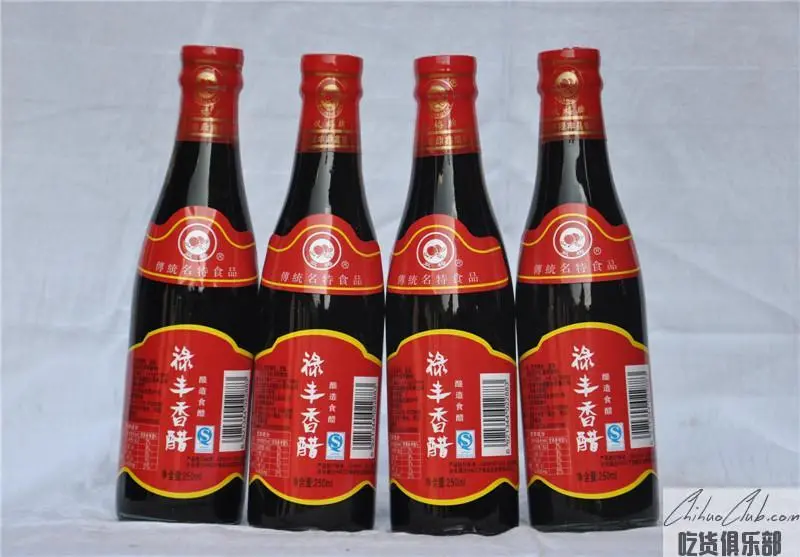
Lufeng balsamic vinegar
-
Update date::
-
Date of protection::
-
Protected range:Lufeng Balsamic Vinegar is produced in Jinshan Town, Zhongcun Township, Tuguan Town, Bicheng Town, Qinfeng Town, Renxing Town, Dinosaur Town, Tuan'an Township, Guangtong Town, Yipinglang Town and Fengxiang Township of Lufeng County, Yunnan Province. There are 14 townships and towns in Heping Town, Caiyun Town and Heijing Town.
-
Related origin:yunnan chuxiongyizuzizhizhou lufengxian lufengxian-jinshanzhen lufengxian-zhongcunxiang lufengxian-tuguanzhen lufengxian-bichengzhen lufengxian-qinfengzhen lufengxian-renxingzhen lufengxian-tuoanxiang lufengxian-guangtongzhen lufengxian-yipinglangzhen lufengxian-gaofengxiang lufengxian-hepingzhen lufengxian-heijingzhen lufengxian-konglongshanzhen lufengxian-caiyunzhen
-
Category:
Lufeng vinegar was originally named Lufeng vinegar. It was produced in the first year of Tianqi in the Ming Dynasty (1621). It has a history of more than 390 years. It was made by the peasant of the surnamed Chen of the North Factory Village of Lufeng County. "The appearance of red brown, clear body, pure aroma, soft sour taste, sweet and mellow, long-lasting taste."
According to legend, in the Chongzhen years of the Ming Dynasty, Wang Xizhen of Lufeng was in the Chaozhiguan to Dongge University. He once brought Lufeng vinegar as a “tribute” to the court. In order to carry it, he also invented a kind of “dry vinegar”. The specific method is to concentrate the vinegar on a clean crepe cloth, and then immerse the crepe in water to reduce it to vinegar. During the Ming and Qing Dynasties, Lufeng was an important station on the Southern Silk Road and the Ancient Tea Horse Road. It was the place where the Western Fujian Caravan transported the black well salt. The merchants, horses, and road passengers in the past, except for the sweet old wells. In addition to the water, they can also eat the food made from Lufeng vinegar, which left a deep impression on them. They formed a folk slang of “Toddian soy sauce Lufeng vinegar, emerging girl Hexibu” through their mouth. According to the word of mouth, "Lufeng Balsamic Vinegar" has since become famous. After years of inheritance and development, Lufeng Balsamic Vinegar has become a local speciality industry in Lufeng County. At present, there are 2 production enterprises of Lufeng Balsamic Vinegar, with an annual output of more than 1900 tons and an output value of more than 20 million yuan. Over the years, Lufeng's balsamic vinegar has won awards for many years. In 1989, he was awarded the title of “National Famous Product of Yunnan Province”; in November 1995, he was awarded the Gold Medal of China Kunming Science and Technology Achievements and New Technology and New Products Exhibition Fair; for 7 consecutive times, it was rated as “Yunnan Consumers' Favorite Product Title” by Yunnan Consumers Association. In 2008, it passed the “Food Safety Management System Certification” of China Quality Certification Center; it won the “Yunnan Famous Brand Agricultural Products” and “Yunnan Famous Brand Products” for 4 consecutive years; it was recognized as “Class A Green” by China Green Food Development Center for 2 consecutive times. Food”; In 2013, it was recognized by the Yunnan Provincial Department of Commerce as the second batch of “Yunnan Time-honored Brand” products. In August 2015, it was protected by the National Geographical Indications Product. Lufeng balsamic vinegar has a high reputation both inside and outside the province, and is well received by consumers. It is also exported to Hong Kong and Japan.
Lufeng balsamic vinegar quality technical requirements 1, the main raw materials 1. Glutinous rice: The glutinous rice produced in the production area has a starch content of ≥70%. 2. 3. Wheat bran: The wheat produced in the production area is processed and its quality is in line with relevant national regulations. 4. Liquor: It is made by adding wheat bran produced in the production area to Rhizopus oryzae and cultivating it for 28 to 36 hours. 5. Acetic acid bacteria: A mixture of A. faecalis AS1.41 and Acetobacter b-3 cultured in the production area. Second, the production process selection material - soak - steaming - saccharification - alcoholization - aging - vinegar - finished products. Third, processing points 1. Soaking: soaking at room temperature, soaking time 4 to 8h, until the rice grain has no white heart; 2. Steaming: steamed with wood scorpion for 1 to 2 hours, steamed until cooked; 3. Saccharification: steamed glutinous rice is rinsed with water to 28 to 30 ° C, mixed with 0.3% koji, and fermented at room temperature for 3 to 4 days; Alcoholization: adding 1.7 to 2.0 times of water, 0.3% to 1% of Aspergillus, 3% to 5% of yeast, liquefy for 4 to 5 days, the temperature is controlled at 25 to 28 ° C, and the cylinder head is opened once a day to stir; 5. Aged: Put the wine cellar into the fermentation room, add the wheat bran and the 7% to 10% acetic acid bacteria in a ratio of 1:3 for solid-state fermentation for 15 to 20 days, then turn Change the pool and continue to ferment for 3 months; Washing vinegar: use leaching method to vinegar. Fourth, the quality characteristics 1. Sensory characteristics: The color of the vinegar is brownish red, the body is clear, the vinegar is pure, the acidity is soft, and the aftertaste is sweet. 2. g/100mL) ≥0.053. Safety and other quality technical requirements: Product safety and other quality technical requirements must comply with relevant national regulations.
Apply to:
Producers within the scope of Lufeng's balsamic vinegar production may apply to the Lufeng County Market Supervision Administration of Yunnan Province for the use of the “Special Mark for Geographical Indication Products”, which shall be reviewed by the Yunnan Provincial Bureau of Quality and Technical Supervision and reported to the General Administration of Quality Supervision, Inspection and Quarantine for approval. . The testing agency of Lufeng Balsamic Vinegar is selected by the Quality and Technical Supervision Bureau of Yunnan Province in the testing institutions that meet the qualification requirements.